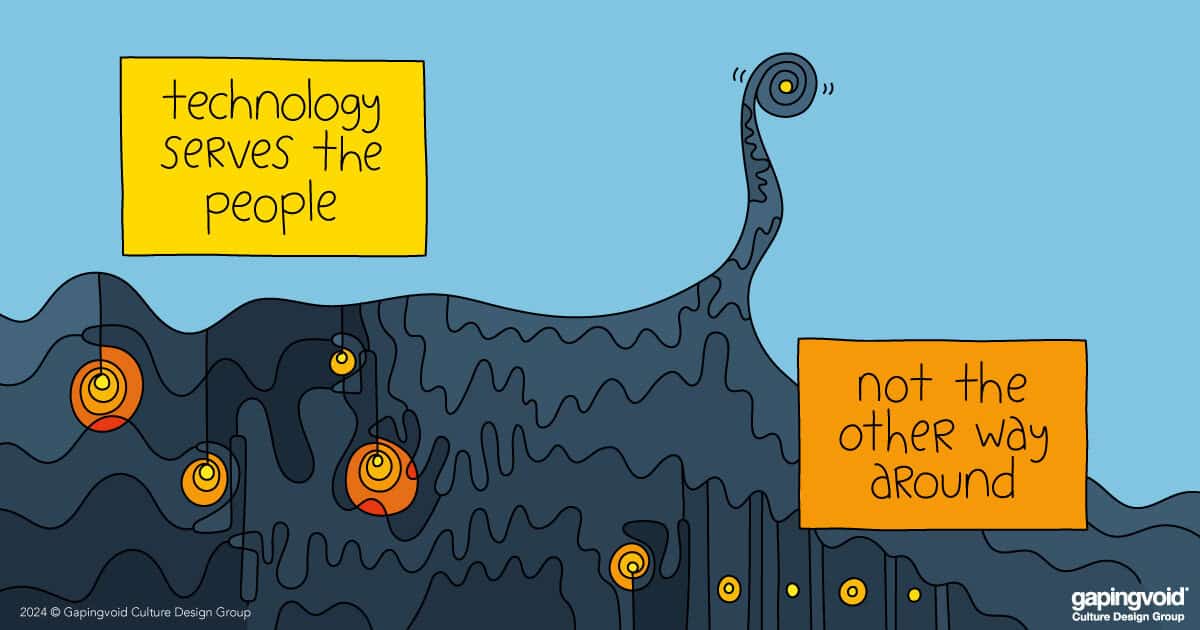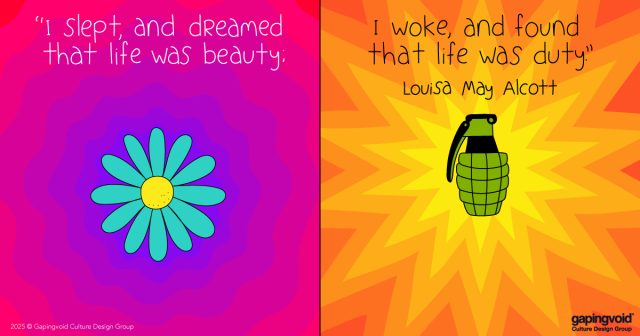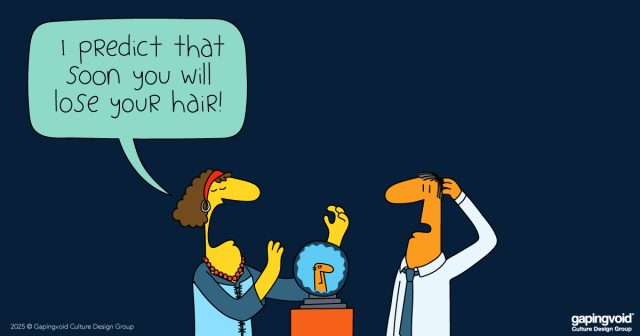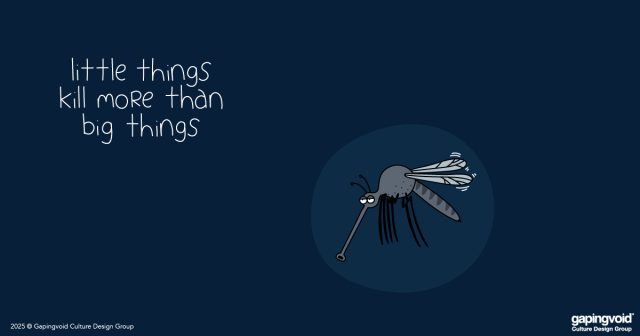
Instead of the intended message: “Hey look how much creativity we squeezed into our new iPad,” it seemed to say, “Hey, look how much of your creativity our new iPad can crush in the pursuit of efficiency!”
(The fact that the ad was blatantly ripping off another ad from 2008 didn’t seem to bother people nearly so much, but that’s another story).
Our old friend Seth Godin made an interesting point: saying if you run the video in reverse, it actually works. The story becomes about creativity springing to life from the iPad, not about creativity being crushed by the machine.
The real question is, why did a mere ad create so many headlines? It’s just an ad about a product whose sales have been declining for a while.
Inadvertently, the ad went “Meta” in a big way, hitting an archetypal nerve, reminding us of one of the great questions of humanity.
Does the machine (in this case, the iPad) serve the creator, or does the creator serve the machine? Which is another way of asking, are you part of the machine, or are you part of the life force? Are you the tool, or are you the user?
The question is ultimately one that whole religions are built on: “Whom do you serve?”
As clever, inventive and powerful as Apple may be, the one thing it can never do is answer that question for us.
An important concept in Buddhist philosophy is upaya-kausalya, or “skill in means.” It refers to the ability of an individual to tailor their message to resonate with a specific audience in such a way that it could better help that audience reach enlightenment.
In a way, the philosophy is about expediency and cleverness – communicating an idea in a way that a) avoids stepping on interpersonal landmines, b) guides an individual to the next step, and c) proactively prevents misinterpretations.
In other words, framing. And the issue with the Apple ad was not so much its message – “this device enables creativity!” – but the way it was (mis)framed through the metaphor of “crushing.”
Crush. Creativity. Two words that don’t belong together. It was hard to hear the ad’s message over the sound of its jarring metaphor.
The frame overpowered the painting.



